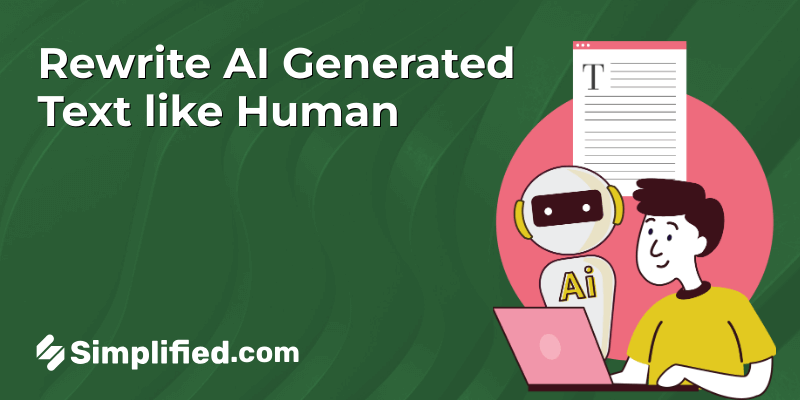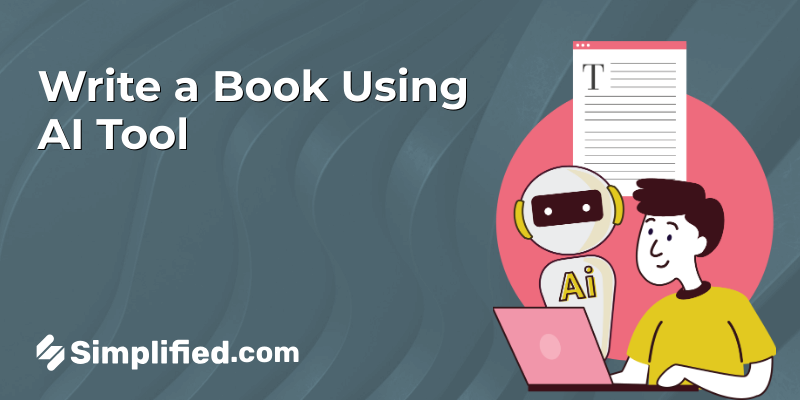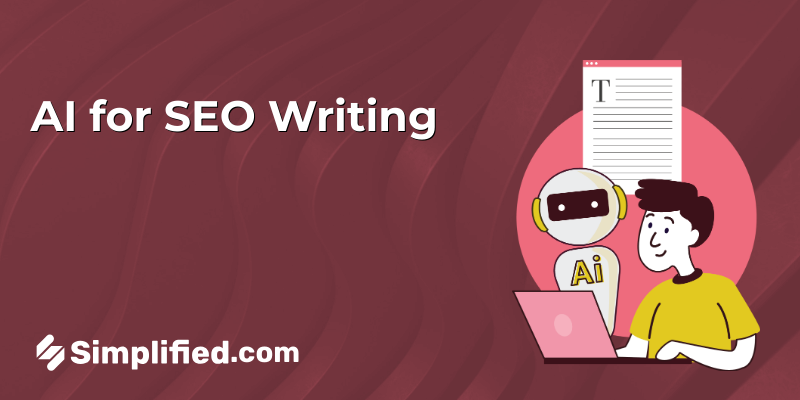|
Getting your Trinity Audio player ready...
|
Did you know that, CNN fired a news editor named Marie-Louise Gumichian after finding out that she had plagiarized over 50 news articles? This may seem extreme, but it goes to show that plagiarism is quite a serious issue.
When it comes to copywriting and content writing, maintaining originality and avoiding plagiarism is of utmost importance. Plagiarism not only undermines the credibility of your work but also goes against ethical and academic standards.
To ensure that your content is authentic and properly attributed, it’s crucial to follow foolproof methods that prevent any unintentional or deliberate acts of plagiarism.
If you are wondering how to avoid plagiarism, continue reading. In this article, we will explore nine effective strategies to help you steer clear of plagiarism pitfalls.
What Is Plagiarism?
Plagiarism refers to the act of using someone else’s ideas, words, or work without giving them proper credit or acknowledgment. The internet has made it easy to find someone else’s work and copy it without giving credit.
Here are some of the most common types of plagiarism:
- Passing off someone else’s work as your own;
- Copying and pasting from an online source without citing it;
- Paraphrasing another individual’s work without giving credit;
- Reusing your content (self-plagiarism);
- Using someone else’s ideas without giving them credit;
- Buying or commissioning someone else to write your paper for you.
Plagiarism is considered unethical and a breach of academic integrity, as it undermines the originality, credibility, and intellectual property rights of the original author. You need to learn how to avoid plagiarism by properly citing sources.
Why Should You Avoid Plagiarism?
Here are some reasons why you should avoid plagiarism when writing any type of content:
- Academic integrity and ethics
Plagiarism goes against the principles of honesty, integrity, and ethical conduct expected in academic and professional settings.
- Respecting intellectual property rights
It infringes upon the intellectual property rights of original authors, denying them the credit and recognition they deserve for their work.
- Maintaining credibility and reputation
Plagiarism damages your own credibility and reputation as a writer, researcher, or professional, as it undermines trust and suggests a lack of original thought.
- Promoting originality and critical thinking
By avoiding plagiarism, you can develop your own unique ideas, perspectives, and arguments, fostering creativity and critical thinking skills.
- Avoiding legal consequences and penalties
Plagiarism can have legal ramifications, including copyright infringement, leading to potential lawsuits, fines, or other legal penalties.
- Upholding professional standards and ethics
Many professions and industries have strict ethical codes and standards that require the proper attribution and acknowledgment of sources, making plagiarism unacceptable.
- Supporting a culture of honesty and fairness
Avoiding plagiarism contributes to a culture of academic and professional honesty, where ideas are respected, collaboration is valued, and intellectual contributions are acknowledged and celebrated.
How to Avoid Plagiarism: 9 Foolproof Methods
If you are wondering how to avoid plagiarism in content writing, follow these 9 effective strategies:
1. Take Careful Notes and Keep Track of Your Sources
Many writers, often unintentionally, commit plagiarism by forgetting to track their sources properly. To avoid this, it is crucial to keep a meticulous record of sources. Here are some tips on how to avoid plagiarism by keeping track of sources:
- Take note of author names, publication dates, titles, page numbers, and URLs during research.
- Use citation management software like Simplified or dedicated notebooks to organize sources.
- Develop a standardized system for labeling and categorizing your notes.
- Clearly distinguish between your own ideas and ideas from external sources in your notes.
- Highlight statements that require citations for easy identification.
- Consistently record and update your sources throughout the writing process.
- Double-check your reference list or bibliography to ensure all sources are included.
Here is an example of how you can easily keep track of your sources:
The research notes follow the color-coded system, with red indicating claims requiring a source, blue representing information paraphrased or summarized, and yellow denoting a direct quotation.
Notes for research paper on the use of AI tools in marketing
- AI-powered chatbots improve customer engagement and support (Smith, 2022)
- Machine learning algorithms can analyze consumer data to personalize marketing campaigns (Johnson, 2021)
- AI-driven recommendation systems enhance cross-selling and upselling strategies (Anderson, 2020)
- Natural language processing enables sentiment analysis of social media posts for brand perception (Clark, 2019)
- “By leveraging AI tools, marketers can automate repetitive tasks and gain actionable insights from large datasets” (Davis, 2021)
2. Cite Your Sources Correctly
Whenever you use someone else’s work in your writing, be sure to properly cite the source. This will show your reader that you’re using other sources and giving credit where it’s due. There are a few different ways to cite sources. The most common way is to use in-text citations, which is when you include the author’s last name and the page number in parentheses.
You can also use footnotes or endnotes, which are notes that appear at the bottom of the page or the end of the document. Finally, you can create a bibliography, which is a list of all the sources you used. Creating citations may seem daunting at first, but it’s worth it to avoid all the trouble that comes with plagiarizing.
Here are some strategies to prevent plagiarism and tips on how to cite properly:
Identify all necessary information
Gather author names, publication dates, titles, and source details.
Choose the right citation style
Follow the guidelines of the appropriate style (APA, MLA, Chicago, etc.).
Use reliable sources
Cite reputable and authoritative sources to enhance the credibility of your work.
Use quotation marks and paraphrasing
Properly attribute direct quotes and paraphrased content to their sources.
Maintain consistency
Follow a consistent citation format throughout your work.
Utilize citation management tools
Take advantage of Simplified’s Citation Generator for accurate citations.
Double-check for accuracy
Review your citations for correct formatting and details before submission.
Consult style guides
Refer to style guides for specific instructions on citing different sources.
Here’s an example of (APA style citation) to show you how to cite properly:
Incorrect Citation
- In-text citation: The research findings highlight the importance of active learning in the classroom (Smith).
- Reference list: Smith. Enhancing Classroom Learning: Strategies for Active Engagement. Academic Press.
Correct Citation
- In-text citation: The research findings highlight the importance of active learning in the classroom (Smith, 2021, p. 76).
- Reference list: Smith, J. (2021). Enhancing Classroom Learning: Strategies for Active Engagement. Academic Press.
If you want to know how to cite properly and keep track of all your sources, try Simplified Citation Generator. It is a powerful tool that can greatly assist you creating accurate citations instantly, be it any style. Our AI tool simplifies the process by automating the citation generation process and saving you valuable time and effort.
Generate Citations Automatically And Instantly With Simplified!
Bonus: Top 7 Citation Generators For Accurate & Easy Referencing
3. Use Online Plagiarism Checkers
If you are wondering “how can plagiarism usually be avoided”, don’t underestimate the power of plagiarism checkers. An online AI plagiarism checker like Simplified helps make your work 100% unique. Simplified instantly searches the internet for a copy using the same phrasing as yours so you can properly credit sources or change content.
It shows you the number of words in your content that match with other sources, and where the sources come from. Overall, online plagiarism checkers are very easy to use and will help you detect plagiarism in a jiffy!
Here’s an example of how to avoid plagiarism using Simplified’s AI Plagiarism Checker:
Original text
With our online plagiarism tool, you can get results of your plagiarism check instantly.
Plagiarized text
With online plagiarism tool, you can check results of your plagiarism instantly.
Plagiarism-free text
Check your content for plagiarism instantly, with our online plagiarism checker tool.
Here’s a detailed video from Simplified Academy to check for plagiarism:
How to check AI outputs for plagiarism
Check Plagiarism For Free With Simplified’s AI Plagiarism Checker!
4. Creativity Never Hurt Anyone
The best way to avoid plagiarism is to create all of your work from scratch. Instead of copy-pasting someone’s work, you can take the time to read and understand the material and then write it in your own words.
It could also mean that you won’t use any sources, either online or offline when writing your content. This may seem like a lot of work, but it’s the best way to make sure that your work is original and plagiarism-free.
Here is an example showing how to not get plagiarism by creating content from scratch instead of using any sources:
Copied from Simplified’s Website
Stop worrying about typos, missing information, or formatting errors – Simplified AI tool ensures that your citations meet all the requirements of your chosen citation style.
Written From Scratch
Simplified is an AI-based app that you can use for generating citations automatically. By using our Citation Generator, you can say goodbye to typing mistakes, formatting errors and missing information. Our tool helps you to meet all the citation requirements and avoid plagiarism.
5. Proper Paraphrasing
Paraphrasing is simply restating something in your own words. It’s a way to incorporate someone else’s ideas into your paper without using their exact words. When you paraphrase, you need to be careful to use your own words without changing the meaning of the main idea.
Remember, simply replacing a few words with synonyms is not sufficient. You need to completely rephrase the text so that it sounds like you. (Since you’re still using someone else’s idea, you’ll need to cite the original source in your work.) You can use Simplified content rewriter to paraphrase your content for free.
Here’s an example depicting how to write without plagiarism by paraphrasing correctly:
Original text
“Artificial intelligence (AI) has revolutionized content writing by enabling automated processes and enhancing efficiency. ” (Johnson, 2022).
Paraphrased incorrectly
AI has transformed the field of content writing by enabling automation and improving effectiveness.
Paraphrased correctly
The utilization of artificial intelligence (AI) has brought about a significant transformation in the realm of content writing, revolutionizing processes and amplifying efficiency as highlighted by Johnson (2022).
6. Add Quotation Marks
When writing, using quotation marks around any words or phrases you borrow from other sources is a surefire way to avoid plagiarism. This lets your readers know that you’re not claiming the words as your own, and it gives credit to the original author. It is one of the most effective strategies to prevent plagiarism.
Quotes are suitable when:
- The original author introduces an exact definition.
- Rephrasing the original text would cause a loss of its meaning.
- You analyze the use of language in the original text.
- You aim to maintain the authority and style of the author’s words.
Here’s an example to show you how to reduce plagiarism by quoting correctly:
Original text
“The theory of relativity revolutionized our understanding of space, time, and gravity” (Smith, 2022).
Quoted incorrectly
The theory of relativity revolutionized our understanding of space, time, and gravity.
Quoted correctly
According to Smith (2022), “the theory of relativity revolutionized our understanding of space, time, and gravity.”
7. Brush Up On Your Writing Skills
It is essential for content creators to continuously work on improving their writing skills. This can be done by reading frequently, increasing your vocabulary, and understanding how to play with words. It’ll also help you familiarize yourself with how to express ideas so that you can avoid plagiarism in long-form content.
Here’s an example of how to write in your own words without plagiarism by brushing up your writing skills:
Original text
Simplified is the number 1 AI tool for content writers.
Incorrect writing skills
Simplified is the number one artificial intelligence tool for content writers.
Correct writing skills
Simplified is one of the best AI writing tools that content creators can use to write unique and original content.
8. Use Quality Sources
When you’re writing, make sure to use quality sources that you can trust. There are a lot of sources out there that are known for being unreliable, so you’ll want to avoid using those. One way to do this is to look for credible sources that are published by reputable organizations. Another way is to read reviews of sources before you use them. This can help you weed out the bad ones.
Here’s an example to demonstrate how can we avoid plagiarism by using quality sources:
Unreliable source
“Aliens Among Us: Extraterrestrial Encounters and Government Conspiracies” blog post on “TheTruthIsOutThere” by an anonymous author.
Quality source
“Climate Change and Its Impact on Global Ecosystems: A Meta-Analysis of Scientific Studies” published in the Journal of Environmental Science and Ecology, authored by Dr. Jane Smith.
9. Edit and Proofread Your Work
If you are wondering, “What other things can you do to avoid plagiarism”, then make sure you proofread your work. Before submitting your research paper, thoroughly review it for any potential instances of plagiarism.
Compare your writing with the original sources to ensure that you have properly cited and attributed all borrowed ideas or quotes. Additionally, use spelling and grammar checkers to improve the overall quality of your work. You can use Simplified’s built-in Grammar Checker to proofread and edit your content.
Here’s an example to show you how to edit and proofread your work to avoid plagiarism:
Not Proofread
Study show teenagers use smartphone more, affect social media usage, decrease face-to-face communication skills
Proofread
Studies show that teenagers are using smartphones more frequently, which has a direct impact on their social media usage and leads to a decline in face-to-face communication skills.
Bonus: Top 10 Best Plagiarism Checker Tools for Content Writers and Bloggers [Free & Paid]
Simplified: All-In-One AI Tool to Avoid Plagiarism In Content
There you have it! By following these simple tips on how to avoid plagiarism, you can easily create unique content. However, to further support writers in their efforts and enhance their citation skills, the Simplified Citation Generator proves to be an invaluable tool.
The AI-powered writing tool provides real-time suggestions and recommendations for proper citation formats based on specific styles or guidelines (MPA, APA, Harvard, or Chicago). Additionally, the built-in free citation generator automates the process of generating accurate citations for various sources, saving valuable time and ensuring precision.
With Simplified, you can:
- Quickly and easily site sources with Free AI Citation Generator
- Avoid typos, missing information, or formatting errors with Grammarly’s suggestions
- Check for plagiarism in content with built-in Plagiarism Checker
- Paraphrase and rewrite content with AI Content Rewriter
- Create unique and original content from scratch using AI Writer
- Get access to 50+ writing templates to write any type of content
- Add graphics, photos and videos in content
- Collaborate with others when writing content
All these amazing features are available for free with Simplified Free Forever Plan!














.jpg)
































